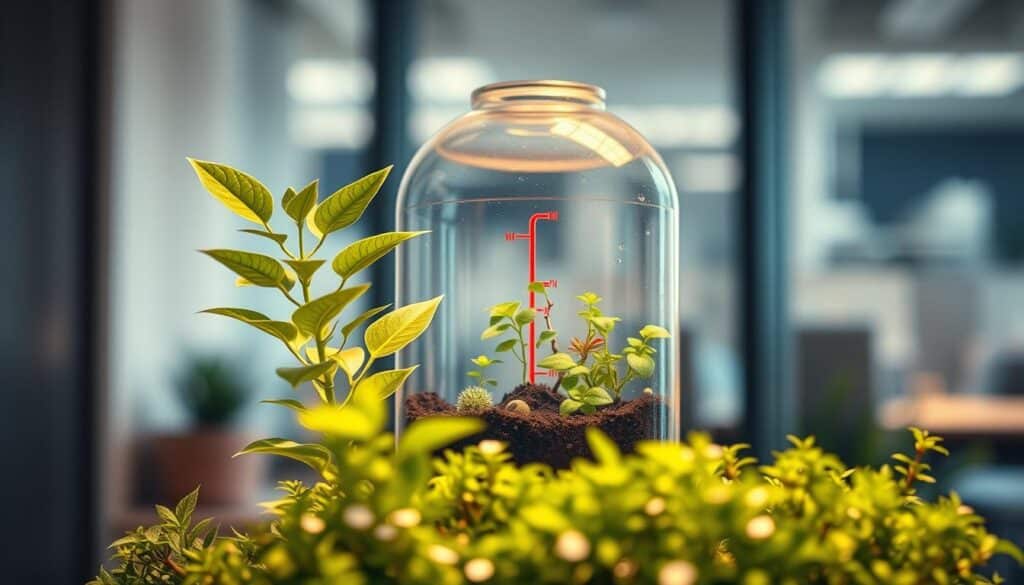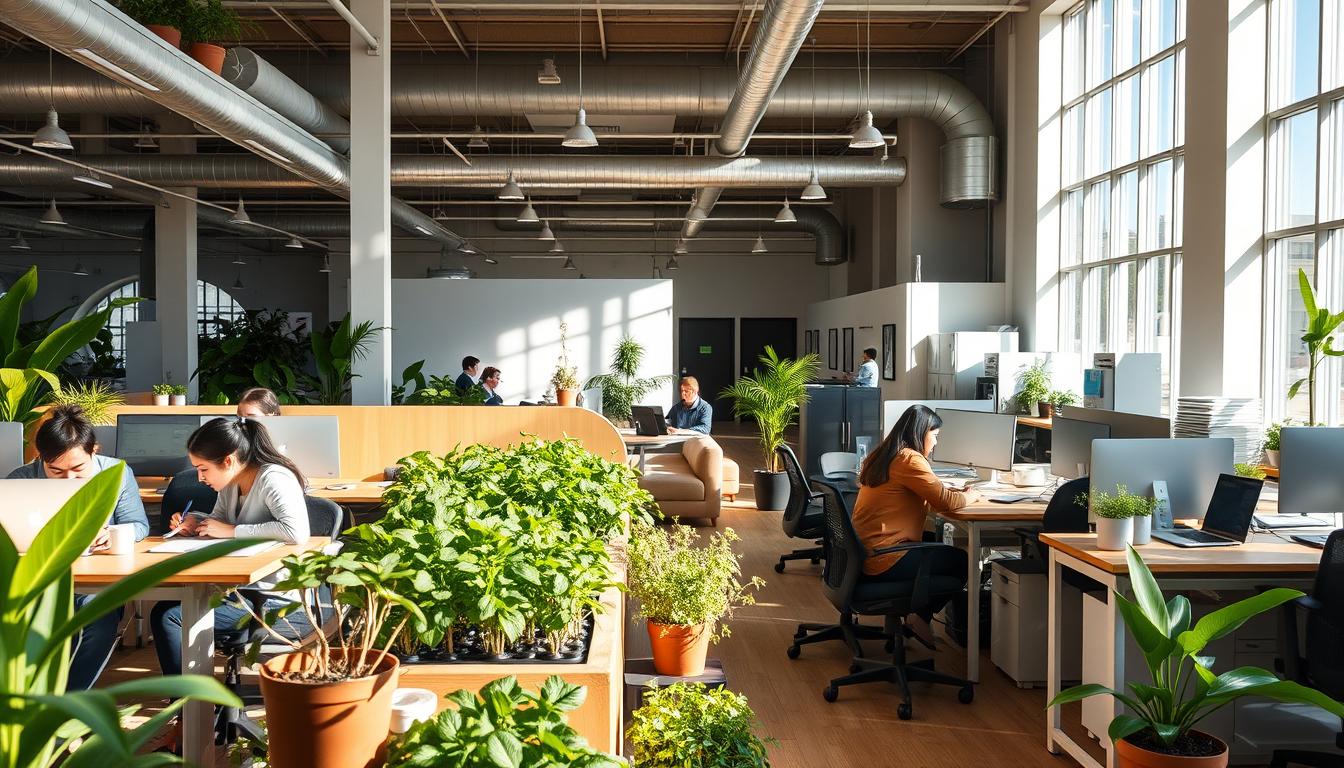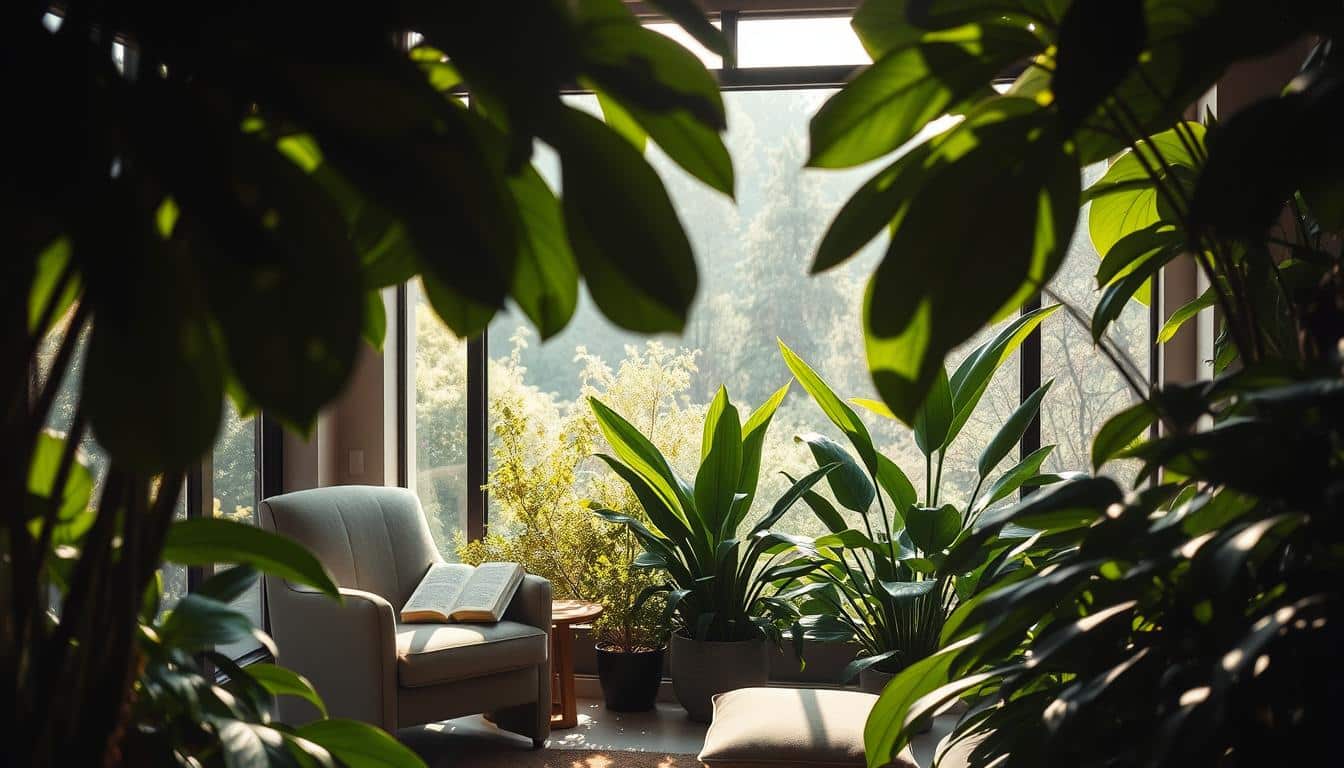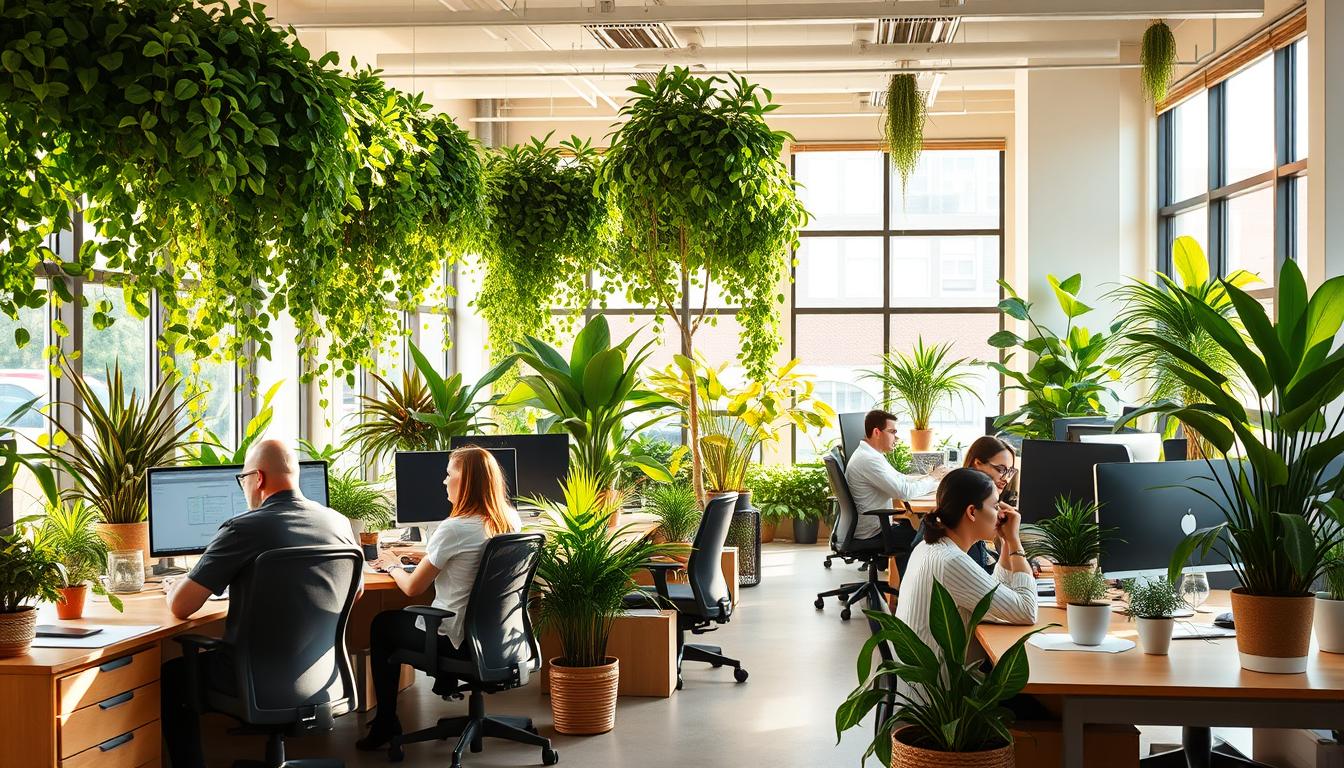Indoor gardening fans need to understand plant microclimates. These unique conditions around your plants affect their growth and health. By knowing about light, temperature, and humidity, you can encourage their best growth.
Indoor plants make our homes look better and clean the air. By paying attention to these factors, you can make sure your plants stay healthy and add beauty to your home.
What is a Microclimate?
A microclimate is a small area with a climate different from the larger area around it. This idea is essential for indoor gardening, influencing how plants perform in certain spots. Factors like sunlight exposure, furniture casting shadows, changes in temperature, and humidity levels all play a part.
Near windows, you’ll find more light and warmth, ideal for some plants. On the other hand, corners far from windows stay cooler. They’re great for plants that prefer less light. Knowing about microclimates helps indoor gardeners pick the best spots for their plants.
Looking closely at these unique conditions allows gardeners to provide the right care for their plants’ growth.

Understanding Indoor Plant Microclimate Effects
The health and growth of indoor plants are influenced by their microclimate. Light, temperature, and humidity levels are key. They create a special environment that affects plant health and growth speed.
Knowing how these factors work helps people create the best conditions for their plants. Some plants need moist air, while others like it drier. By checking their environment, you can make the perfect home for each plant.
Having different plants together can change the microclimate, making the air moister. The right mix and care can greatly improve your indoor garden. Finding the ideal light, warmth, and moisture levels can really boost the look and health of your plants.
The Role of Light in Indoor Plant Growth
Light plays a big role in keeping indoor plants healthy and growing well. You need to know how different lights affect your plants to make them thrive. There are many lighting options for indoors, and where you place them can help or hurt your plant’s health.
Types of Lighting: Sunny vs. Shady Rooms
Plants that need a lot of light do great in sunny rooms. Ficus and Bamboo Palm are two examples that love lots of light. But, some plants prefer the shade. Dracaena and Aglaonemas like less light. Where you put your plants, based on the light, can make or break your indoor garden.
Conducting the Light Test to Determine Optimal Conditions
It’s easy to see how much light your plants get with a simple test. Just hold your hand over white paper and look at the shadow. This shadow tells you if the light is bright, medium, or low. Once you know, you can find the best spot for each of your plants. This helps your plants stay healthy and grow better.
Temperature: A Key Factor for Plant Health
It’s vital to get the indoor temperature right for plant health and growth. Seasonal changes can either help or hurt plants. Each season impacts indoor plants in unique ways, affecting their health.
Seasonal Temperature Variations and Their Impact
Winter’s cold can harm sensitive plants. Yet, summer’s warmth boosts growth in many plants. It’s important for indoor gardeners to watch these changes. They should ensure plants stay in their ideal temperature range all year. Choosing plants that fit the indoor temperature boosts their health a lot.
Assessing Warm and Cool Rooms for Plant Selection
Some plants handle temperature swings better than others. For example, certain Aglaonema types do well in cooler spots, ideal for chilly rooms. When picking plants, think about the room’s temperature. Match them with plants known for handling temperatures well. This approach helps plants grow better and last longer.
Humidity Levels and Their Influence on Plant Well-being
Keeping indoor humidity right is key for plant health. Most plants do better in more moisture than our homes usually have. Dry air from heaters or air conditioners can hurt plant growth. By checking humidity regularly, you help plants get the moisture they thrive on.
How Indoor Humidity Affects Houseplants
Each plant needs a certain amount of moisture. But, low humidity can stress them out and cause problems. You might see browning leaves, wilting, or slow growth. While some plants handle dry air okay, tropical ones really need humid air. Knowing about humidity and plant needs helps us take better care of them.
Strategies to Increase Humidity for Healthy Growth
Raising indoor humidity can really help plants stay healthy. Here are some good ways to do it:
- Put plants together so they share moisture.
- Use humidifiers to add moisture to the air.
- Keep plants in humid rooms like kitchens and bathrooms.
- Use pebble trays with water under pots to boost humidity.
These tips can make a big difference in how well your plants grow and stay healthy.
Indoor Plant Microclimate Effects on Growth & Health
Understanding your home’s microclimate is key to helping indoor plants thrive. Humidity, light, and temperature are critical. By placing plants together, you can create the best conditions for them.
The Importance of Grouping Plants for Humidity Creation
Putting plants close to each other helps boost humidity around them. This shared moisture helps plants grow better and healthier. It’s a way to make sure they all get enough water from the air.
Choosing the right plants for your home’s conditions is crucial. Every plant needs certain things to grow well, like the right amount of light and warmth. By picking plants suited to your home, you can have a greener, more vibrant space.
Common Indoor Microclimates in Homes
It’s important to know about the different indoor microclimates in homes for plant care. Some areas in the house can really affect how plants grow and their health.
- Near Windows: This spot usually gets a lot of light and warmth, perfect for plants that love the sun.
- Kitchens: The moisture from cooking is great for some plants, like those from tropical places that need a humid environment.
- Basements: These are often cooler and more humid, which some plants find just right.
- Heating and Cooling Vents: The air near these vents can switch from hot to cold, so you need to be careful when putting plants here. It’s important to pick plants that can handle these changes.
Every microclimate in your home has special traits you should think about when picking plants. Knowing about these microclimates can help your plants grow well and stay healthy.
The Impact of Air Quality on Indoor Plants
Indoor plants help make the air in homes and offices better. They remove toxins and pollutants, making the air healthier. This makes the space look good and benefits both people and plants.
Understanding Air Purification Through Plants
Many studies show that indoor plants can clean the air. They take in carbon dioxide and give out oxygen, which we need to breathe. Some plants can even remove harmful chemicals from the air. Having a mix of plants helps keep the indoor air clean.
The Relationship Between Indoor Plants and Human Health
Having plants indoors is great for our health. They can make us feel less stressed, lower our blood pressure, and help us think clearer. A healthy place to live or work is good for both us and the plants. It shows why it’s important to choose and take care of plants well.
Identifying and Adapting Microclimatic Conditions
When you learn about your home’s different microclimatic conditions, your indoor gardens can really thrive. You need to see where your plants are and understand each spot’s unique vibe. This helps you make the right changes for better growth.
Start by checking things like:
- Light exposure throughout the day
- Temperature changes in each room
- Humidity levels, especially in kitchens and bathrooms
Even small changes can make your plants happier. For instance, moving a tropical plant to a damper area helps it grow better. It’s all about making sure they get enough light too.
Always keep an eye on your plants. Be ready to move them around as the seasons change. By adjusting to different microclimates, you’ll see your indoor plants flourish.
Best Practices for Creating Ideal Indoor Settings for Plants
To grow plants indoors successfully, you need to know how to make their environment just right. This means figuring out the best lighting, temperature, and humidity for their health. By doing this, you can make sure each part of their environment meets their needs.
Evaluating Lighting, Temperature, and Humidity
It’s important to look at your space to keep your plants happy. Here’s what to think about for each aspect:
- Lighting: Check where you get the most natural light and think about using artificial lights for extra help. Put your plants in places where they’ll get the light they need.
- Temperature: Keep an eye on the thermometer to make sure your space stays between 65°F and 75°F during the day. This range is cozy for most indoor plants.
- Humidity: Try to keep the air moist, especially if it’s dry inside. Use humidifiers or pebble trays filled with water to help.
Making Adjustments for Seasonal Changes
When seasons change, your plants will need different things. Here’s how to keep up with those needs:
- Watch how the light changes and move your plants so they always get enough.
- Change how much you water them, based on whether it’s dryer or more humid, to make sure they’re not too thirsty or too wet.
- Think about if they need more or less food as the seasons change and they grow differently.
Conclusion
Grasping how indoor plants’ microclimate affects their growth and health is essential. By learning how to care for them, you can help your plants thrive. The way you manage temperature, humidity, and light shapes your indoor garden’s health.
Think about what your plants need and how your home affects their growth. Use what you’ve learned here to improve how you care for your indoor plants.
By controlling humidity, making the most of light, and keeping the right temperature, your plants will be healthier. This turns your home into a green haven. Let your knowledge of microclimates help you grow a great indoor garden all year.



